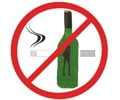
"We know quite a bit about how to reduce youth exposure to alcohol marketing and advertising," said David Jernigan, PhD, CAMY director. "Unfortunately, this report shows states have a long way to go towards using that knowledge to reduce youth exposure."
Alcohol is responsible for 4,700 deaths per year among young people under the age of 21. At least 14 studies have found that the more young people are exposed to alcohol advertising and marketing, the more likely they are to drink, or if they are already drinking, to drink more.
"Although the federal government has exercised primary responsibility with respect to regulating alcohol marketing, states have concurrent jurisdiction as outlined in the 21st Amendment of the Constitution," said James Mosher, JD, the report's lead author and consultant to the Center on Alcohol Marketing and Youth. "It's therefore disappointing to see how inactive states are in this legislative and regulatory arena."
The report identifies eight best practices states could use to address youth exposure to alcohol marketing and advertising:
- Prohibit false or misleading advertising;
- Prohibit alcohol advertising that targets minors;
- Establish jurisdiction over in-state electronic media (TV and radio);
- Restrict outdoor alcohol advertising in locations where children are likely to be present;
- Restrict alcohol advertising on alcohol retail outlet windows and outside areas;
- Prohibit alcohol advertising on college campuses;
- Restrict alcohol sponsorship of civic events; and,
- Limit the alcohol industry's ability to provide free goods (giveaways).
The authors then assessed each state's use of these strategies. Each state's law was rated as either "BP" (all elements of the best practice are present), "I" (at least one but not all elements of the best practice is present) or "--"(the state does not address the regulatory category, the law has none of the elements of the best practice, or the law may be unenforceable).
Advertisement
Source-Eurekalert















